The earth's environment: vegetation types
Key inquiry question #1
How does the environment support the lives of people and other living things?
Content
Different environments
Students:
- investigate the natural characteristics of Australia and a country in Asia, for example: (ACHGK020)
- natural vegetation of Australia
Significance of environments
Students:
- investigate the importance of natural vegetation and natural resources to the environment, animals and people, for example: (ACHGK021, ACHGK022, ACHGK024)
- identification of types of natural vegetation (ie. forests, grasslands, deserts)
Background Notes for Teachers
Scope
This unit provides the basis for understanding the types of natural vegetation found in Australia. An understanding of types of plants, and in turn the vegetation types they belong to, will form the basis of developing understandings of significance of the plants to Australian animals, to people and to maintaining functioning environments.
Vegetation types
Vegetation types are determined by soil type, landforms and climate, particularly rainfall. In general terms, if there is more rainfall the environment can support taller plants and a greater variety of plants. The Australian landmass is one of the driest continents on earth. The amount and pattern of rainfall in Australia restricts the forests to the margins, which experience the highest rainfall.
Temperature also affects vegetation type but is not addressed in this learning sequence. For example, tropical rainforests are defined particularly by both high temperatures and high rainfall, and are only found in northern Australia due to their proximity to the equator. Further research could be undertaken into how temperature affects vegetation type.
History syllabus link
Botanical illustrations by colonial artists from the State Library of NSW collection have been used to provide a rich demonstration of different types of Australian plants to students. This can provide a link to the Stage 2 History syllabus. Students could investigate the everyday life of an artist who sailed on the First Fleet and who recorded the native plants and animals whilst living in the early colony, (ie. George Raper). This could form part of the students’ inquiry into stories of the First Fleet in the topic First Contacts.
Student Activities
What kinds of plants are in Australia?
Students study an early drawing of plants in Australia and answer questions about the natural environment.
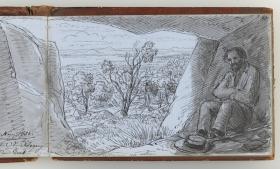
Trees, shrubs and grasses
Students observe early drawings and paintings of Australian flora and categorise them into groups.
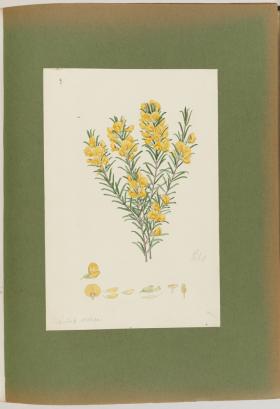
Vegetation types
Students view a series of natural plants and flower and they then describe the main groups of plants and other natural features in each vegetation type.
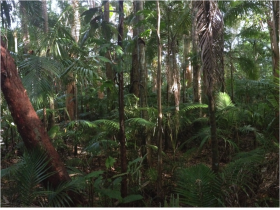
Vegetation and rainfall
Students use a Google Earth satellite image of Australia and explore the vegetation cover. and put in rainfall data.
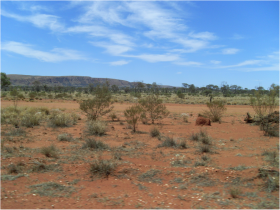
Field journal
Students draw a field sketch of an area of natural vegetation in their school grounds or local area. They label trees, shrubs, grasses and other natural features and also write about it from the point of view of a colonial explorer.
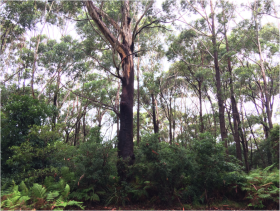
NSW Syllabus for the Australian Curriculum Geography K–6
A student:
- GE2-1 examines features and characteristics of places and environments
- GE2-4 acquires and communicates geographical information using geographical tools for inquiry
Acquiring geographical information
- develop geographical questions to investigate (ACHGS019, ACHGS026)
- collect and record relevant geographical data and information, for example, by observing, by interviewing, conducting surveys, or using maps, visual representations, the media or the internet (ACHGS020, ACHGS027)
Processing geographical information
- represent data by constructing tables, graphs and maps (ACHGS021, ACHGS028)
- represent information by constructing large-scale maps that conform to cartographic conventions, using spatial technologies as appropriate (ACHGS022, ACHGS029)
- interpret geographical data to identify distributions and patterns and draw conclusions (ACHGS023, ACHGS030)
Communicating geographical information
- present findings in a range of communication forms, for example, written, oral, digital, graphic, tabular and visual, and use geographical terminology (ACHGS024, ACHGS031)
- reflect on their learning to propose individual action in response to a contemporary geographical challenge and identify the expected effects of the proposal (ACHGS025, ACHGS032)
- Place: the significance of places and what they are like (ie. natural and human features and characteristics of different places and their similarities and differences; how people’s perceptions about places influence their responses and actions to protect them).
- Space: the significance of location and spatial distribution, and ways people organise and manage spaces that we live in ( ie. settlement patterns within Australia, neighbouring countries and other countries).
- Environment: the significance of the environment in human life, and the important interrelationships between humans and the environment (ie.how climate and environment influence settlement patterns; interconnections between people and environments; differing ways people can use environments sustainably).
- Interconnection: no object of geographical study can be viewed in isolation (ie. interconnections between people, places and environments; influence of people’s values on the management and protection of places and environments and the custodial responsibilities of Aboriginal and Torres Strait Islander Peoples).
- Scale: the way that geographical phenomena and problems can be examined at different spatial levels (ie. types of settlement across a range of scales; the influence of climate across a range of scales).
- Sustainability: the capacity of the environment to continue to support our lives and the lives of other living creatures into the future (ie. ways in which people, including Aboriginal and Torres Strait Islander Peoples, use and protect natural resources; differing views about environmental sustainability; sustainable management of waste).
Learning Across the Curriculum
- Information and communication technology capability
- Critical and creative thinking
- Literacy
- Difference and diversity
Resources
Picture books
Same, But Little Bit Diff’rent by Kylie Dunstan
Why I Love Australia by Bronwyn Bancroft
The Bushwalk by Sandra Kendall
Where the Forest Meets the Sea by Jeannie Baker
Bilby Secrets by Edel Wignell and Mark Jackson
Field sketching
Maps